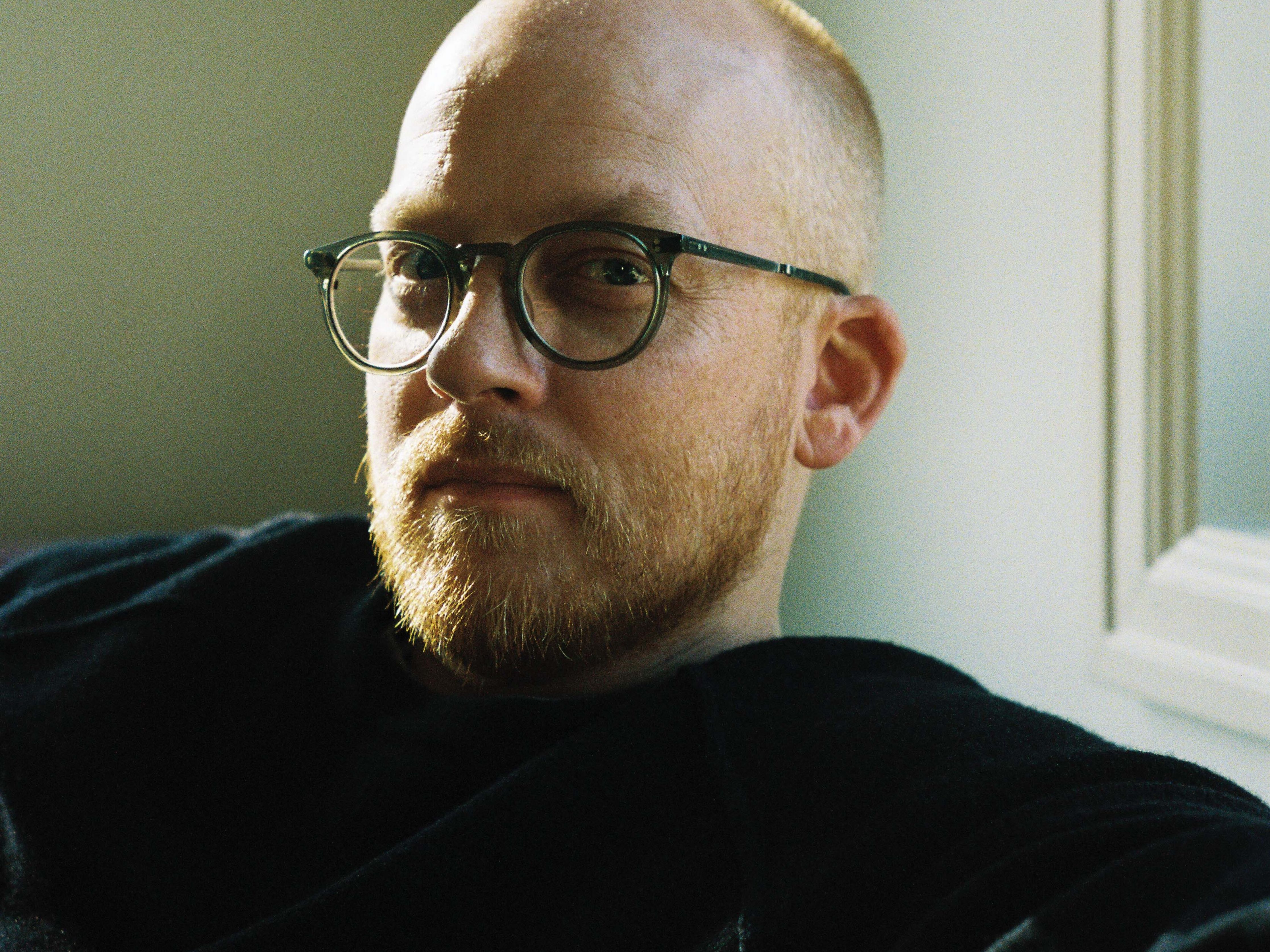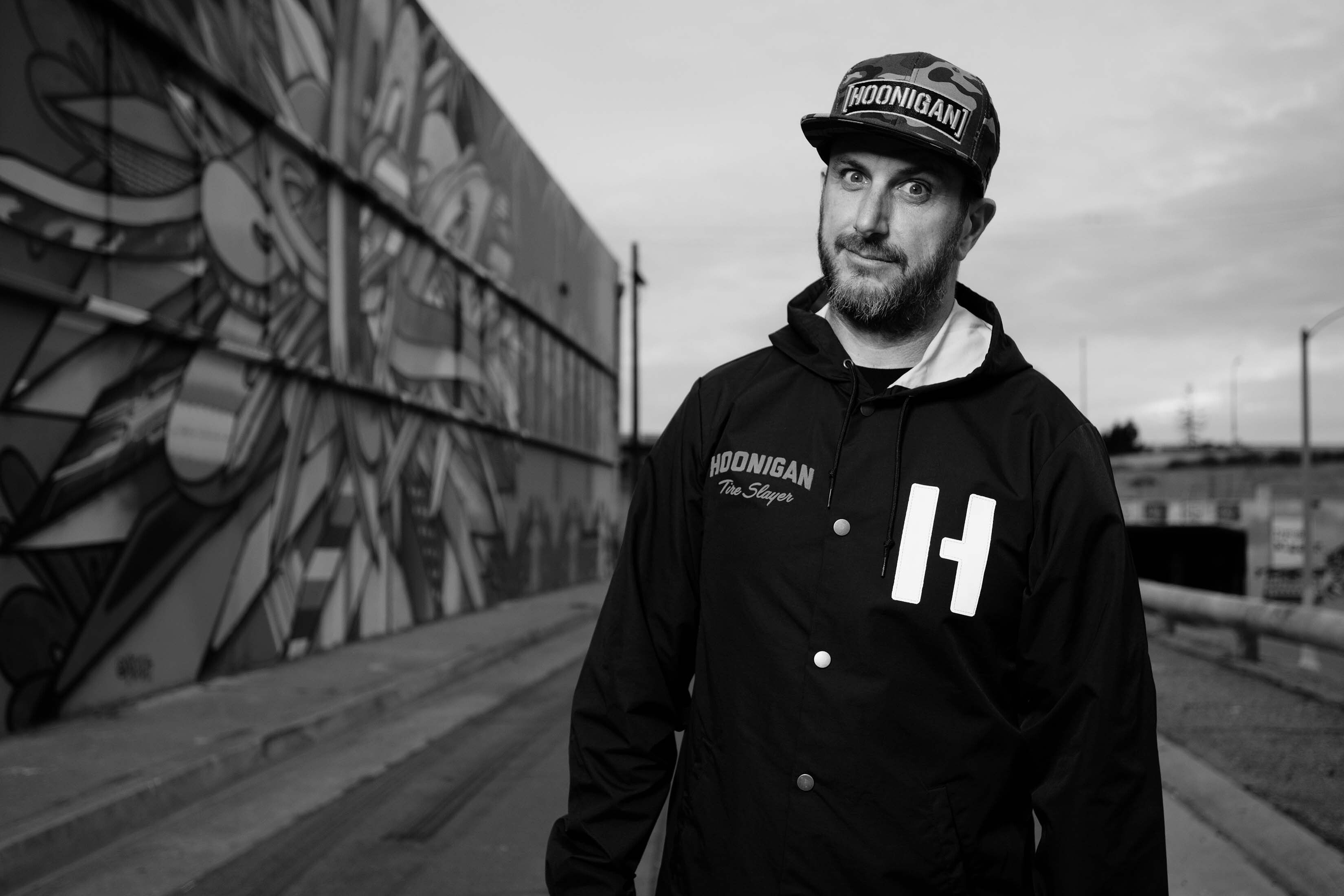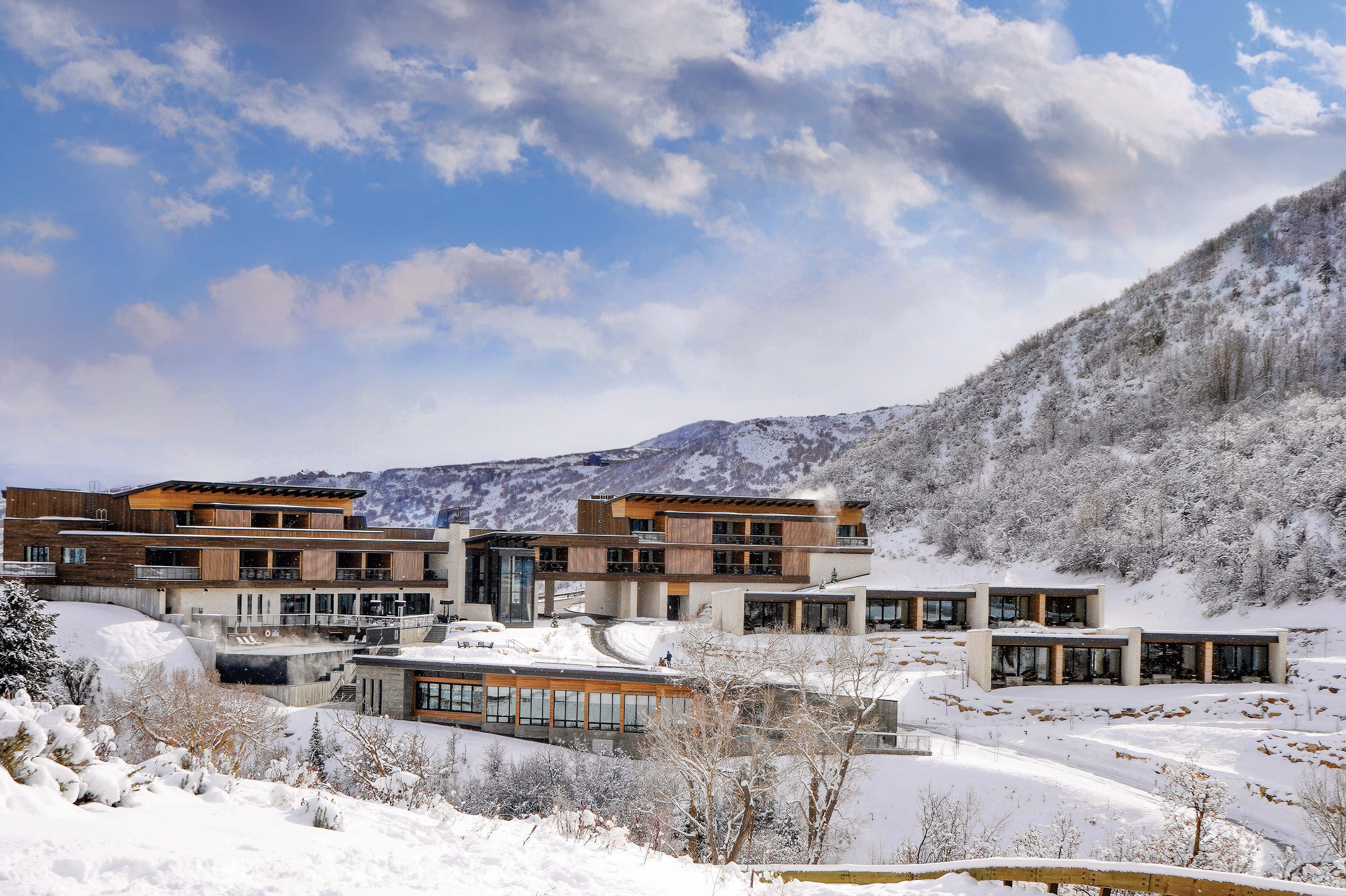Meet Park City Ceramicist Morgan Mullins
Park City–based ceramic artist Morgan Mullins started Waves of Stone Pottery (wavesofstonepottery.com) far from the Wasatch Ranch in 2018 while she was living in a one-bedroom apartment in Washington, DC. Yet it was mountains, like those found in her future home state, that inspired the name of her pottery business: she heard the phrase in a documentary that described mountains as “not like waves of water, but waves of stone.”
The undulating moniker illuminates Mullins’s approach to incorporating balance, movement, and flow in her works. Clay is malleable until it’s fired and becomes a static object; with Waves of Stone, Mullins wanted to convey that sense of “frozen movement,” she says, as well as a sense of tactile interaction as pottery is passed from hand to hand.
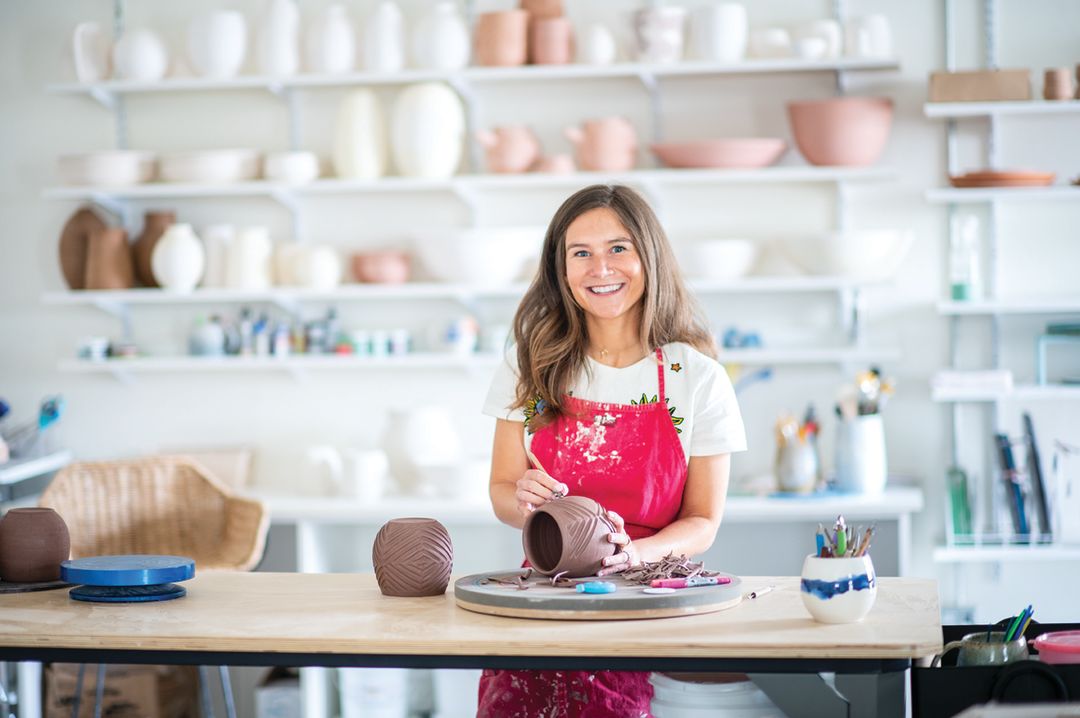
See more photos of Mullins at work and her newest pieces on Instagram: @wavesofstonepottery.
Image: David Newkirk
Her pottery style has evolved in that same vein, with airy blues and whites conveying a sense of calm and care. Mullins describes her aesthetic as “a balance of feeling ethereal and bright and light and feminine, but also grounded in [imperfection]; you can tell immediately it’s made by human hands.” She looks to historic potters like Shōji Hamada and Warren MacKenzie, as well as contemporaries like Steve Smith and Victoria Morris, for inspiration.
In 2019, Mullins moved with her now-husband, Jared, to Park City, where his family was based. She says she was nervous about entering a new community, but it felt easy to make connections, and she found the local arts community to be welcoming to new artists. “It definitely feels like there’s an abundance of opportunities,” she says of her adopted town, thanks in part to pop-ups and events sponsored by the Arts Council, among others. “It’s really cool how the community in Park City seems to get behind local artwork,” she adds.
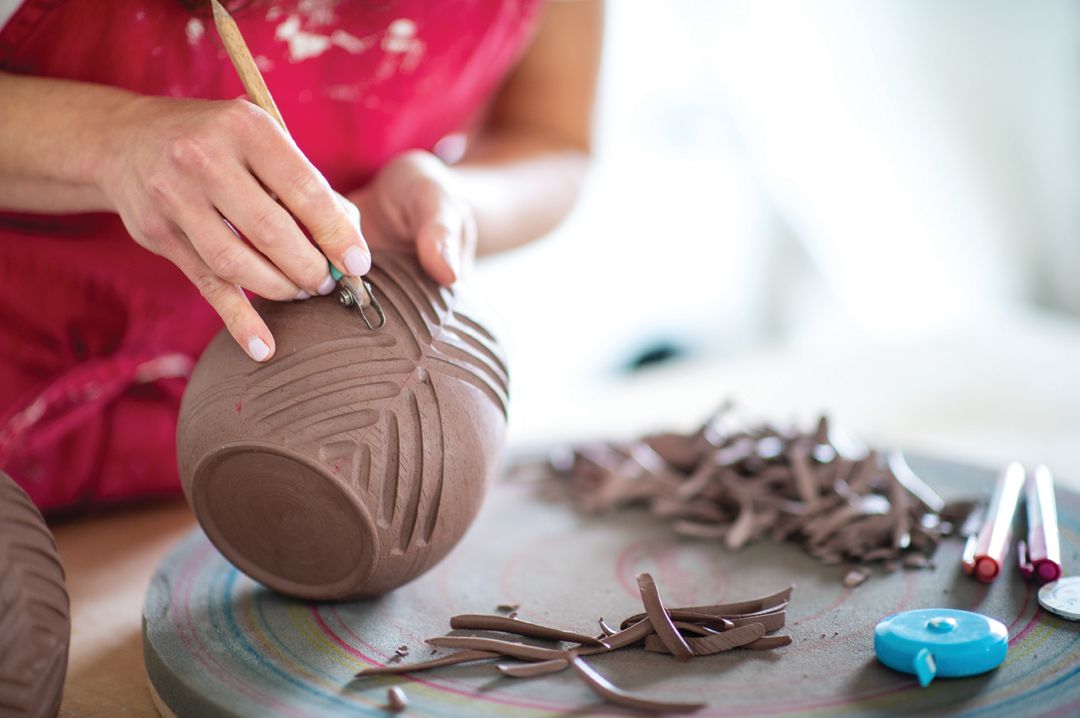
Image: David Newkirk
Before pursuing pottery, Mullins earned a master’s degree in public health, and she still applies some of those methods in her art. “Pottery is so much about research methodologies and experimental design,” she says—including awaiting the unknown results when pieces come out of the kiln. A finished piece that looks deceptively simple might have come from a process of testing multiple combinations of glazes and clays until settling on the final look.
Mullins’s future plans include experimenting with new tools and techniques, throwing larger pieces, and potentially selling her work in stores. While artistic entrepreneurship has its challenges, she says she continues to be inspired by the waves of stone around her: “Seeing a ridgeline lit up and then figuring out how I can imbue that feeling into a pot.”

